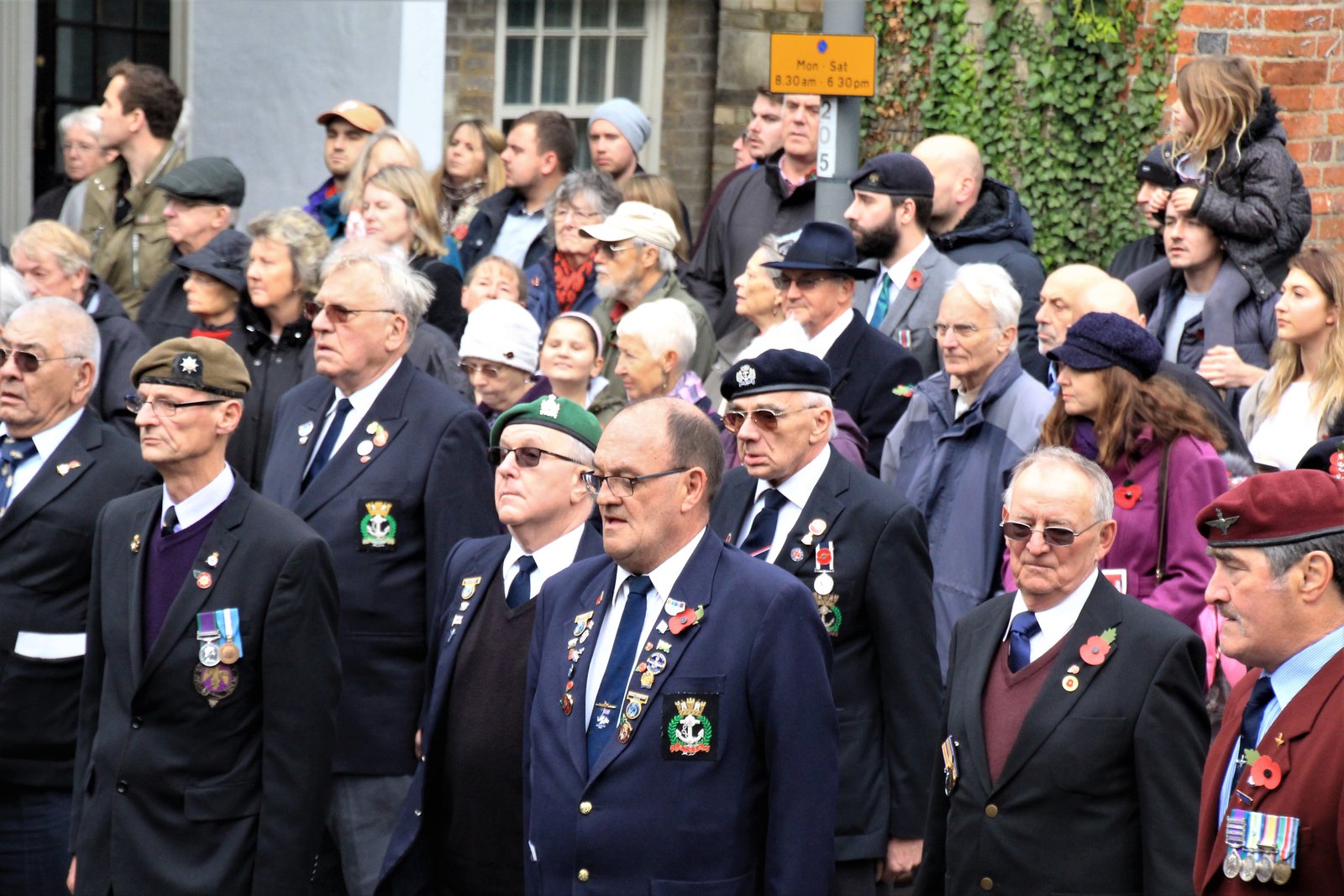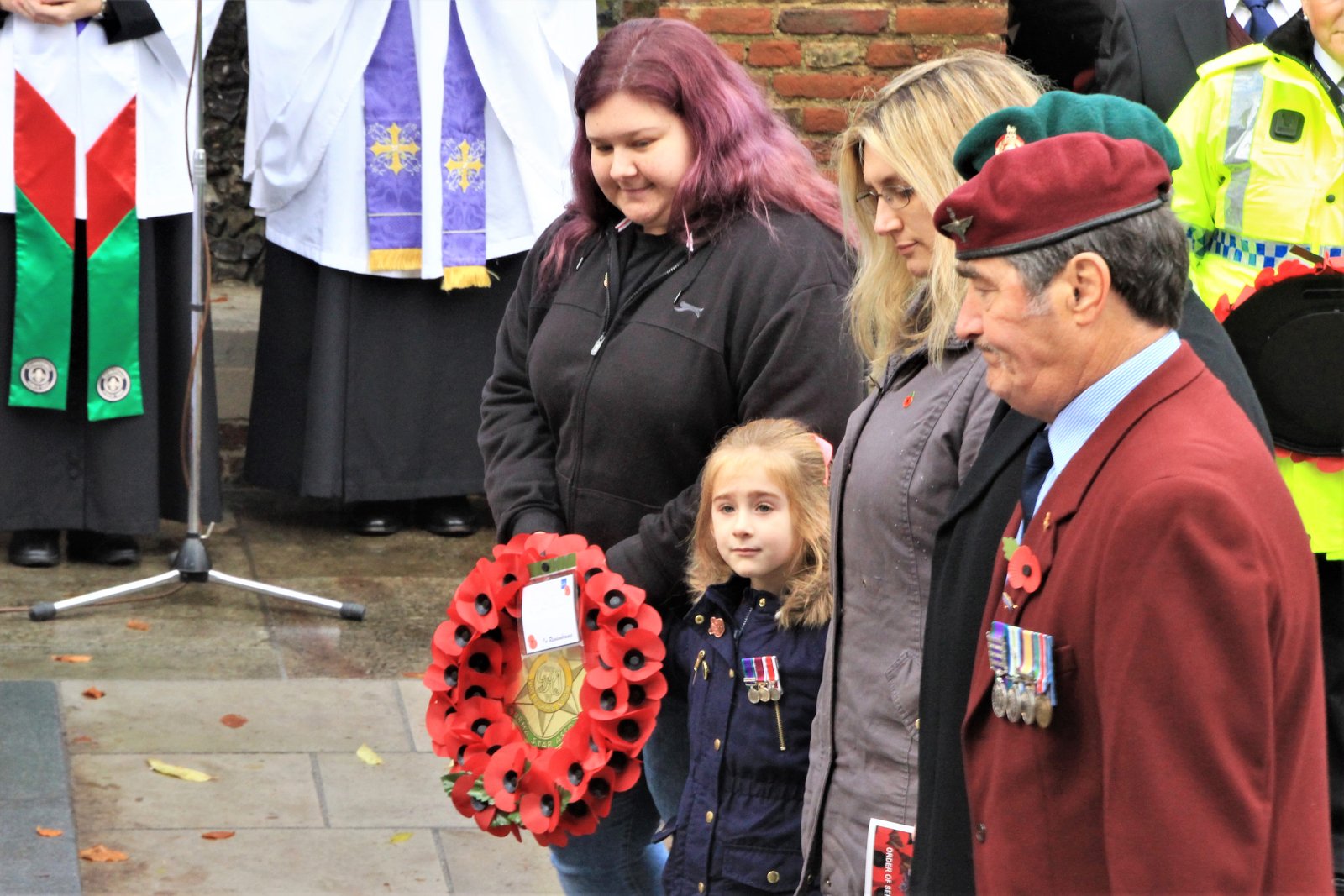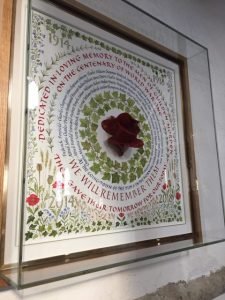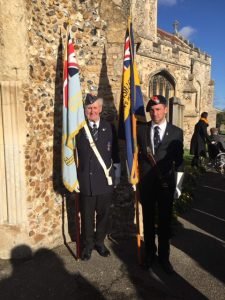Remembrance in Royston and beyond
Below you can see a huge range of the beautiful tributes in and around Royston to commemorate Armistice Day tomorrow. It will be one hundred years to the day since the guns fell silent on the eleventh hour, of the eleventh day, of the eleventh month of 1918, bringing the First World War to an end. It was supposed to be the war to end all wars.
In Royston huge crowds gathered the streets to watch the parade which featured servicemen and women, veterans, cadets, community groups and many others – and there were two services on the day as well as the well-observed Act of Remembrance at 11am.
The Steam at the Hoops in Association with Royston & District Round Table were very proud to have donated a WWI Memorial Bench to the people of Bassingbourn. It was unveiled for the first time on Remembrance Sunday. We would like to thank our sponsors and everyone involved. Without donations this would not have been possible.
The Remembrance services in the Mordens were greatly attended with an amazing turn out at every location. The airfield, Odsey, Steeple and Guilden – there wasn’t even standing room in the Church at Guilden!
Melbourn Hub Exhibition
To commemorate the Centenary of WWI, The Melbourn Community Hub hosted an intriguing but poignant Exhibition in its Atrium on Saturday. Young and old alike attended the display to understand more about the terrible conflict that raged between 1914 to 1918, and to learn about the Melbourn men who so courageously laid down their lives for their Country.
Over 40 local casualities are recorded on the War Memorial, one of whom was a Charles “Charley” Dodkin, who was born in September 1893, and lived at Heath Cottages on Newmarket Road. He was the youngest of three boys and two girls, who were part of seven family members residing in the two up, two down cottage. His father was initially a farm labourer, before being promoted to Horse Keeper, and then to Foreman, the latter post resulting in the family’s move to the Farm House.
At the age of 17 in 1911 Charley was working as a labourer on the Farm. He later joined the 1st. Batallion Hertfordshire Regiment, enlisting in Royston. He served in the trenches during the the First Ypres campaign, then the Battle of Festubert, and the Battle of Loos, culminating in the Battle of the Somme.
Charles died from wounds during fighting on The Front in 1916 and was laid to rest in Merville Community Cemetry at Nord in France.
Another brave soldier from the Village, Private Sidney Webb, was in the Grenadier Guards during the War and recounts how he managed to escape German troops. He and his Regiment encountered fierce fighting with a body of Germans soon after arriving near Compiegne in 1914, and he was hit twice. Along with the rest of his unit Sidney was captured and marched to a local church where they were fed on something that tasted like “billposters paste”. The following day they were all taken to a large country house where they stayed for a week. They heard that the French troops were coming to liberate the area, but at the same time the Germans were returning to transport everyone that could walk. Sidney cleverly slipped upstairs and hid under a bed, from where he could see the boots of the Germans as they strode into the room. Three hours later the French Artillery arrived and the soldiers remaining were transferred to an English hospital, before being transferred back to a Military Hospital in London.
Remembrance in the Villages














































